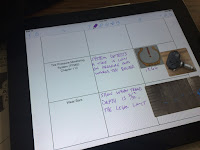Twitter for Professional Educators
-or-
How I stopped following Kim Kardashian, and learned to love twitter!
As an early adopter and lover of all things tech- and shiny, I have to admit that I’ve signed up for a lot of stuff on the internet that ended up not being very useful. I have accounts for Edmodo, Weebly, Wikispaces, ActiveGrade, snapgrade, hojoki, cloudmagic, and even something called jumprope. Some of these things are really useful to other people, and some of them don’t even exist anymore. The point is, I sign up for stuff and then often abandon it.
But not twitter.
I love twitter, not because it’s cool or edgy (the way I use it is profoundly not edgy), but because twitter saves me time as a teacher. If this is something that’s interesting to you, I encourage you to read on and see if there’s something useful. If you’re saying this is profoundly not for you, maybe read a little bit anyway—this could be the next thing you sign up for and never use :)
Before we go any further, if you haven’t heard this, you need to know. Twitter is designed to put short—really short—messages into the public internet. Each “tweet” is limited to 140 characters, including spaces. Celebrities have used this to advance causes like world peace and also to keep us updated on the grilled cheese sandwich they had for lunch. The idea of putting one’s random thoughts onto the internet might seem horrifying—but it turns out, there are lots of people using this tool for productive professional good. Here’s how.
1. Okay, where do I want to save time?
-News Collection
-Personal Professional Development
-Communicating with Students & Parents
I think twitter can be useful for any of these things, but I’m going to ignore the last one for now. First, while I know some teachers who love to use twitter to post course and school announcements and have had great success, there are a number of tools available to us that also do this well. Second, the news collection and professional development areas seem really inefficient to me—this is our best chance to save ourselves some time.
As a science teacher, I want to stay up-to-date on what’s happening in science, but I don’t have time to read journals, or even go to sites like Popular Science or Nature on a regular basis—it would be really great if I could have all the science news I cared about sent to me.
I also want to keep thinking about resources for my teaching practice and professional development—whether that’s classroom practice, workshops and opportunities for professional growth, or just inspirational things other people are doing in my content area.
2. Creating a Twitter account
First of all, you don't have to have any inclination to tweet to want a twitter account. You can create an account merely to aggregate and organize the things other people are posting.
Sign up! Your professional twitter handle should be something you’re comfortable with people seeing, should you decide to start tweeting your own thoughts. For example, I used “mrtraphagen” as my twitter handle rather than “DNAroxx1981”.
3. Who to “follow”
Following someone on twitter means you get updates automatically whenever they say something or (more often for teachers) post a link to an interesting piece of news or post a resource.
Twitter will make some suggestions as you sign up based on looking through your contacts and the interests you check. My contacts produced a list of science teachers, and Patrick Kane. Note: I chose to “follow” the science teachers, so I will now see any future tweets that they post. I am not following Patrick Kane on my professional account.
Once you have identified some people whose ideas you find thought provoking, if you click on one of their profiles, you’ll find all the people and organizations that they follow. In this way, you can begin to expand your circle. My twitter feed consists of four main categories: science organizations & journals, other practicing science teachers, educational technology, and people interested in organizational health and culture. There are some other people that I follow that don’t fit one of those categories, but that’s basically it.
Lists!
Jill Duffy wrote an excellent piece on using twitter lists to organize the information beamed into your twitter feed. I don’t have anything to add to this, but once you start following lots of interesting things, making these lists can help you separate your twitter feed by topic.
Speaking of topics, there are two symbols that you need to be familiar with in twitter. Anytime a person is “mentioned” in a twitter post, their handle gets the @ symbol in front of it. So in other words, if Dawn and I were working on a new guide for tech integration in classrooms, I might tweet:
“Working on a rubric for tech integration with @DawnBodden for @District214 #edtech”
Notice that thing on the end with the #? This, formerly known as the “pound symbol” is a “hashtag” on twitter. Hashtags label posts by topic, allowing someone to search everything on the web with that label. For example, once a week, AP Bio teachers from across the country discuss one topic and share resources, and label this with #APBiochat
Okay, that’s all for now…that should be enough to get you started following some people you already know, and start to expand your network to like-minded people. I’ll check back in a couple of weeks with some thoughts on actually tweeting your own thoughts and tips for twitter power users.
Cheers,
Stephen
@mrtraphagen






Comments
Post a Comment